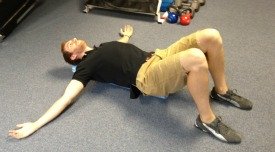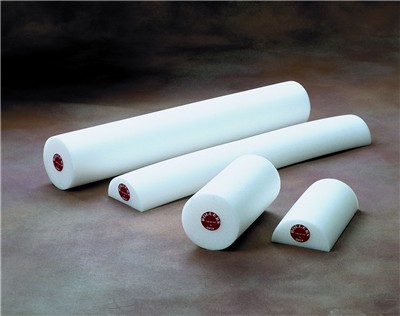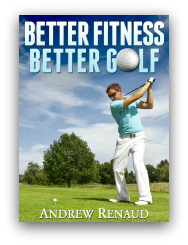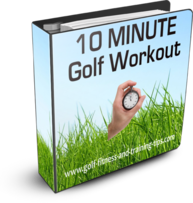Foam Roller Exercises To Help Reduce Tightness For Golf
The use of foam rollers is one this that I have seen explode over the course of a few years in the physical therapy world. I have gone from using them very little a few years ago, to now using them on a daily basis. They can be used for a wide variety of areas, including your arms, legs, and core. They are a great addition to any golf fitness routine, and will supplement traditional flexibility exercises.
How Does A Foam Roller Work?
If you are unfamiliar with rollers, and/or have never used one, their purpose is for something called self myofascial release. Essentially, using a roller is kind of like a deep tissue massage; if you hit the right areas, its going to cause discomfort, or even pain, but it usually feels better whenever you are done! A group that commonly uses rollers are runners. They will use them on their quads, hamstrings, calves, and especially IT bands in order to help relieve tightness.
For golfers, foam rollers are used for very similar purposes, however, we use them on more golf specific areas such as the low back, hips, and even around your shoulders. The National Academy of Sports Medicine recommends them for golfers as part of a corrective exercise routine. Here, they are used in order to help loosen up tight tissue and allow for more flexibility. If you would like more information regarding exactly how to use your roller, please click here.
Here is a technical explanation of how they work:
Present in your muscles are receptors called Golgi tendon organs. These receptors monitor that amount of tension that is present in the tissue. They send signals back and forth to your spinal cord and brain relaying this information. When you utilize a roller, you stimulate these receptors. Typically after about 30 seconds, you brain will send a signal back down to you muscles to relax, which reduces the tension present. A deep tissue massage works in the same manner.

So once this resting tension is relieved, your muscles can move more
freely and efficiently. They are great for targeting tight muscles and
muscle imbalances. To see long term changes, just like with stretches,
you need to be persistent and use them over a period of time. One use
certainly isn't enough for a permanent change!
The one thing that you will notice when you use one of these devices is that it may hurt a little. This is perfectly natural, and actually, expected. Over time as the tension lessens, so will the pain.
Types Of Rollers
Foam rollers come in all shapes, styles, and patterns. Some are also more firm than others. The size that I most commonly use with my patients is 6 inches in diameter and 36 inches long. I have found that this size works very well for lower extremity flexibility as well as for core exercises. The rollers can also be purchased in smaller sizes, as well. For balance exercises, I use rollers that have been halved (you buy them that way), typically3"x12". You can then stand on these and perform various exercises to help improve leg strength and balance.
The density of the foam will be a personal preference of who is using it. Obviously, the more dense the foam, the more pressure it will exert on your tissues. This can either be good or bad! Some people will really respond well to a more dense roller, but if your tissues are very sensitive, you may want to stick with something a little softer.

The style of roller is also something to consider. Some are a plain color where others are tye-died. Some are smooth where others may have small protrusions to work out trigger points in the tissue.
The rollers that I use in the clinic and strongly recommend for purchase are made by OPTP. Of all the rollers that I have seen, these are the cream of the crop! They are high quality, and long lasting,
ensuring that you will be able to use each one for years. They come in a
variety of choices but these are the ones I use the most:
-AXIS White Slightly less dense, so it will be more comfortable, especially for beginners.
-AXIS Black More dense than the white version, so this roller will exert a little more pressure on your soft tissue.
- Blue Marble The Cadillac of rollers! Made of a different foam composite than the AXIS rollers to ensure maximum comfort! Also available in Green and a softer Pink color.
If you are looking to purchase a foam roller, the price that you pay will reflect some of the factors mentioned about, plus others such a brand. For example, you may pay a few dollars more for a roller that is made of more dense foam. Also, different types of foam composite will affect the price.
My one tip for purchasing a roller is don't settle for the cheapest one! The prices will vary from $10-40 for a 6"x36", and there will be a huge difference between the two ends of the spectrum. You do not need to break the bank, but definitely consider the quality.
Also, in addition to foam rollers, I have an entire page dedicated to my favorite Golf Fitness Products. Please follow the link to check out the page.
Do You Want More Strength, Power, and Endurance for Golf?
|
My comprehensive e-book, "Better Fitness, Better Golf", will show you exactly, step-by-step, which exercises to perform and when! It's a complete training regimen leading you through all phases of the golf season. |
 |
Specific roller exercises pages :
Looking for ROLLER EXERCISES for your legs? Click here
Need roller exercises for the BACK AND CORE? Click here
Click here for FOAM ROLLER EXERCISES for your arms
Sign up for my Golf Fitness Tips E-Zine and receive access to my FREE report: The 10 Minute Golf Workout!




New! Comments
Have your say about what you just read! Leave me a comment in the box below.